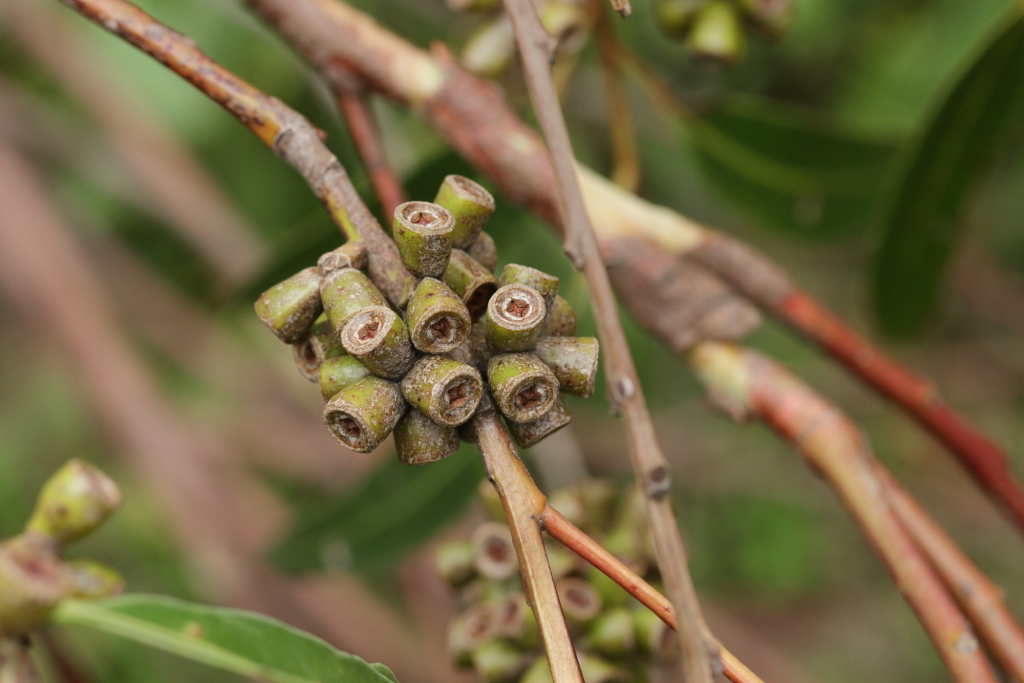Eucalyptus botryoides
Sm. Southern MahoganyTree to 40 m tall; bark rough on trunk and larger limbs, in thick elongated slabs; branches smooth. Juvenile leaves petiolate, opposite for few pairs then alternate, ovate or lanceolate, to 15 cm long, 8.5 cm wide, dull, green, discolorous; adult leaves petiolate, alternate, lanceolate, to 16 cm long, 4 cm wide, discolorous, green; with regular, wide-angled pinnate side veins; reticulation dense, apparently glandless. Inflorescences axillary, unbranched; peduncles flattened, to 1.5 cm long, 7–11-flowered; buds sessile or pedicellate, oblong or ovoid, to 1 cm long, 0.6 cm diam., scar present; operculum conical or hemispherical; stamens inflexed; anthers cuneate; ovules in 4 vertical rows; flowers white or creamy white. Fruit sessile or shortly pedicellate, cylindric or barrel-shaped, to 1.2 cm long, 0.9 cm diam.; disc vertically descending; valves 3 or 4, rim level or enclosed; seed brown, pyramidal to cuboid with toothed edges, hilum terminal. Flowers Feb.
Wim, VVP, VRiv, GipP, OtP, WaP, Gold, CVU, DunT, NIS, EGL, EGU, HSF, HNF, OtR, Strz. Also NSW. In Victoria east from near Loch Sport, mainly on near-coastal sandy plains and alluvial terraces, but also in gullies of foothills.
The only native representative in Victoria of series Transversae, it has been traditionally classified with the eastern blue gums (subseries Leptocarpae) and in a recent study was reduced to a subspecies of E. saligna (Passioura & Ash 1993). However, on bark characters it belongs to the related red mahoganies (subseries Annulares) and its natural affinities remain unresolved. Some mostly smooth-barked E. botryoides in the Cann Valley approach E. saligna (see note under that species).
A small number of scattered white gums occurring on the Boole-Poole Peninsula in the Gippsalnd Lakes were thought to be hybrids between Eucalyptus botryoides and E. tereticornis subsp. mediana. Successive trials have produced seedlings with no segregation toward either presumptive parents, suggesting that the trees may represent a distinct, yet-to-be-named species.
Brooker, M.I.H.; Slee, A.V. (1996). Eucalyptus. In: Walsh, N.G.; Entwisle, T.J., Flora of Victoria Vol. 3, Dicotyledons Winteraceae to Myrtaceae, pp. 946–1009. Inkata Press, Melbourne.
 Spinning
Spinning




